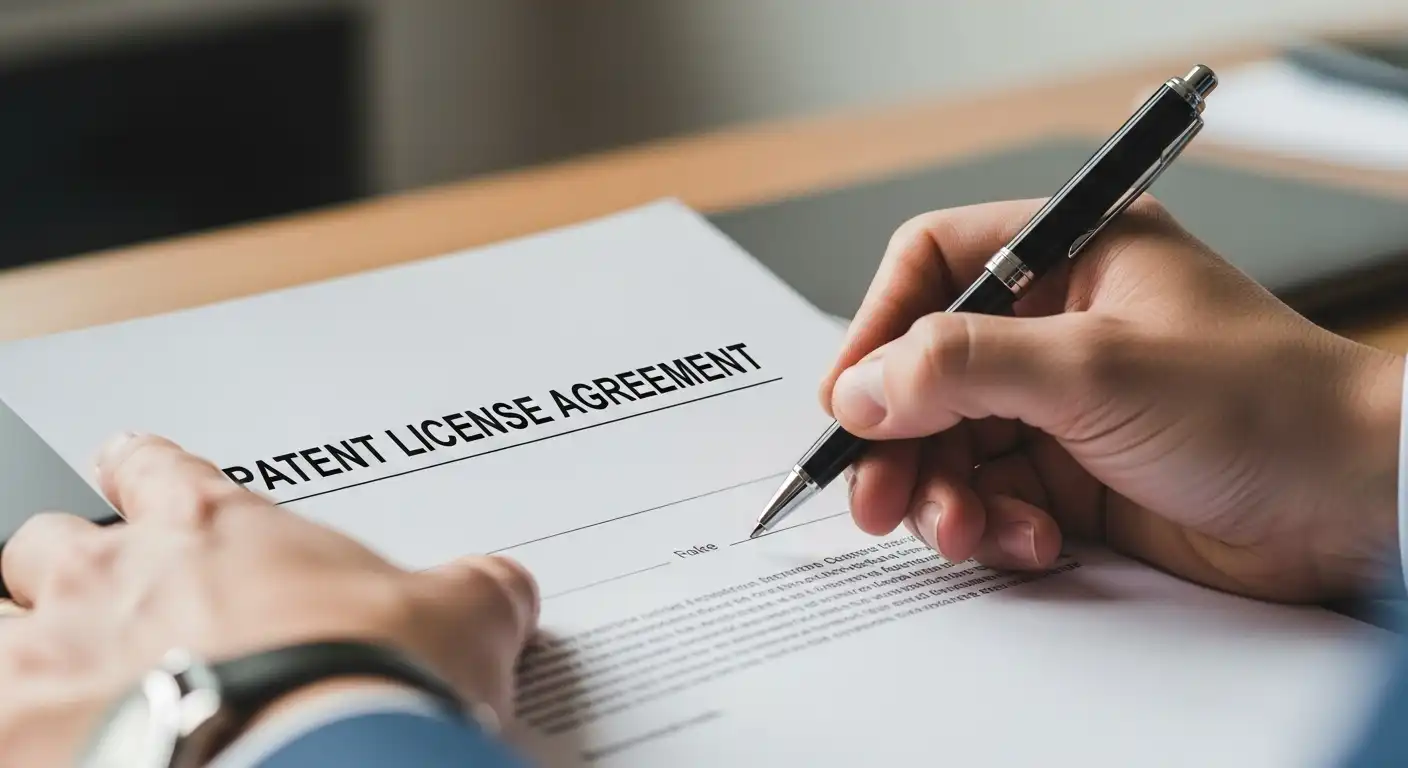Licensing Your Patented Invention: Key Legal Considerations for Success
Licensing your patented invention opens doors to new markets, partners, and revenue streams. By granting another party the right to use, make, sell, or import your innovation, you unlock value from your intellectual property without manufacturing or marketing it yourself. This process fuels collaboration between inventors and businesses, accelerates technology transfer, and drives growth in industries ranging from pharmaceuticals to software.
Understanding the key legal considerations is essential for success in patent licensing. Each agreement shapes the future of your invention—defining who can use it, under what terms, and how disputes are handled. A misstep during negotiation or documentation can lead to lost profits or diminished control.
Key takeaway: Careful attention to legal details is the foundation for maximizing benefits and minimizing risks when licensing your patented invention. Mastering these considerations equips you to protect your interests and achieve lasting business success.
Types of Licenses

Exclusive License
An exclusive license grants the licensee exclusive rights to practice the invention within agreed-upon territories and fields of use. This type of license ensures that the licensee is the sole party authorized to make, use, sell, offer for sale, or import the patented invention under the conditions specified in the agreement.
Key characteristics of an exclusive license include:
Granting sole rights: The licensee receives all rights to the patented invention, which means the patentee cannot grant similar rights to any other party.
Patentee limitations: The patentee themselves are typically restricted from practicing the invention within the granted territories and fields of use. This effectively means that once an exclusive license is granted, the patentee gives up their ability to compete directly in those areas.
Enhanced value: Because of their exclusivity, such licenses are often more valuable and can command higher royalties or upfront payments compared to non-exclusive licenses.
Example Scenario: Imagine a tech company developed a groundbreaking software algorithm and patented it. They then grant an exclusive license for this patent to another company specializing in commercial applications of such algorithms within North America. In this situation, only the licensee in North America can use or sell products incorporating this algorithm. The original tech company cannot authorize others, nor can they utilize it themselves within that region.
The primary advantage of an exclusive license lies in its potential for higher economic returns due to its exclusivity. However, careful negotiation and drafting are required to ensure clear boundaries on rights and responsibilities, preventing future disputes between licensor and licensee.
A Non-Exclusive License allows the patent owner to grant rights to multiple licensees simultaneously. This type of license provides each licensee the ability to make, use, sell, offer for sale, or import the patented invention without exclusivity.
Some key features include:
Multiple Licensees: Unlike an exclusive license, a non-exclusive license permits numerous parties to practice the invention at the same time.
Simultaneous Practice: Each licensee can operate independently of others, providing flexibility and broader market access for the patented technology.
Territories and Fields of Use: The patentee retains rights and can continue to grant licenses in various territories or fields of use.
This licensing approach is beneficial when aiming to maximize market penetration and revenue through widespread adoption. Additionally, it mitigates risk by not relying on a single entity for commercialization success.
Co-Exclusive License
A co-exclusive license grants exclusive rights to multiple licensees, while excluding the patentee from practicing the invention. This type of license allows several parties to share the exclusive use of a patented invention within specified territories or fields of use.
Key elements of a co-exclusive license include:
Multiple Licensees: Multiple entities can hold the same exclusive rights.
Excluding Patentee: The original patent holder cannot utilize the invention during the term of the co-exclusive license.
Specified Fields: Each licensee may have exclusive rights in different fields of use or geographic regions.
For example, a pharmaceutical company might grant co-exclusive licenses to different manufacturers in separate countries, ensuring that each has exclusive rights within their region while preventing any overlap in territories. This arrangement can maximize market reach while maintaining control over how and where the invention is used.
Understanding these distinctions is vital for structuring effective patent licensing agreements that meet strategic business goals and legal requirements.

License Agreement Components
Grant Clause
The grant clause is the backbone of any patent license agreement. It establishes who holds what rights and under what circumstances those rights can be exercised. Precision in language is essential here, as vague or broad terms may lead to disputes, lost revenue, or even the invalidation of the agreement.
Key elements to address in the grant clause:
The agreement must clearly define what the licensee can do—whether it’s making, using, selling, offering for sale, or importing the patented invention. Some agreements limit rights to a specific field of use (such as medical applications only), while others might allow broad commercial exploitation.
Rights Not Granted
Explicitly identifying what is not granted under the license is just as important.
For example:
The patentee may reserve rights for research or educational purposes.
Certain territories or market segments might be excluded.
Improvements or modifications to the patented technology could remain with the original inventor.
Whether the license is exclusive, non-exclusive, or co-exclusive should be unambiguous within this clause. A poorly drafted exclusivity provision can trigger litigation or regulatory scrutiny.
Example:
A medical device company licensing its patented technology might grant an exclusive license for North America but retain the right to license other parties outside that region. If this isn’t spelled out in the grant clause, misunderstandings can delay product launches and damage partnerships.
Limitations and Conditions
Time limits, performance milestones, and quality standards are often embedded within the grant clause. These conditions define when and how rights revert to the patentee if not met.
A well-drafted grant clause not only protects both parties’ interests but also sets expectations from day one, reducing risk and ensuring a smoother partnership as you move into issues like sublicensing and royalty payments.
Sublicensing Clause
Sublicensing provisions determine whether the licensee can grant some or all of their licensed rights to third parties. This clause is central in shaping control over the invention’s use and distribution beyond the original licensee.
Here are some key elements to consider when drafting a sublicensing clause:
Permitted Sublicensing: Define if sublicensing is allowed and under what conditions. Some agreements prohibit sublicensing entirely, while others allow it freely or only with prior written consent from the patent owner.
Approval Requirements: Specify any approval process required for sublicensing, including notification timelines, information about potential sublicensees, and criteria the licensor may use to approve or deny requests.
Compensation and Reporting: Address how royalties and payments from sublicensees are shared between licensor and licensee. Include requirements for detailed reporting on sublicensing activities.
Scope of Rights Granted: Clarify which rights can be sublicensed (such as manufacturing, selling, or using the invention) and any limitations on fields of use or territories.
Clear sublicensing terms reduce disputes over unauthorized transfers and help protect your intellectual property’s value as you define both rights granted and rights not granted in the agreement.
Term and Territory Clause
When licensing your patented invention, defining the term and territory is crucial. This clause sets the duration of the license, specifying how long the licensee has the rights to use, make, or sell your invention. A clear timeline helps prevent misunderstandings and ensures both parties know when the license begins and ends.
Geographical limitations are also addressed in this clause. It outlines where the licensee can operate under the granted rights, whether it’s within a specific country, region, or globally. Defining these boundaries ensures that both parties have a mutual understanding of where the licensed activities can legally take place.
Key considerations for this clause include:
Duration of License: Clearly state the start and end dates.
Geographic Scope: Specify regions or countries where the license is valid.
Renewal Options: Include terms for possible extensions or renewals if applicable.
Ensuring clarity in the term and territory clause maintains a structured agreement and avoids potential legal conflicts regarding the scope of rights granted.
Royalties and Payments Clause
Determining the methods of compensation is a critical component of your licensing agreement. There are multiple ways to structure payments:
Lump Sum Payments: A one-time payment made by the licensee upon signing the agreement. This approach provides immediate revenue but may not maximize long-term income potential.
Recurring Royalties: Payments based on a percentage of sales, units sold, or milestones achieved. This method aligns the financial interests of both parties and can provide a steady stream of income.
Milestone Payments: Compensation triggered by specific events such as regulatory approvals, reaching sales targets, or completing development phases. These payments incentivize performance and ensure continuous progress.
Understanding these compensation structures helps in drafting an effective agreement that balances risk and reward for both parties. It is essential to include clear terms regarding payment schedules, calculation methods, and auditing rights to avoid disputes.
Performance Obligations Clause
Ensuring compliance with performance standards by the licensee is critical to the success of a licensing agreement. These standards ensure that the licensee uses the patented invention effectively and meets agreed-upon milestones.
Key elements of Performance Obligations include:
Production Requirements: Specifying minimum production levels ensures the licensee actively exploits the patent, maximizing its market potential.
Sales Targets: Setting sales benchmarks guarantees that the licensee promotes and sells the product effectively, contributing to royalty payments and market penetration.
Reporting Obligations: Regular reporting keeps the patentee informed about production, sales, and other relevant metrics, facilitating transparency and accountability.
Performance Obligations clauses address how non-compliance impacts the agreement. These terms protect your interests by ensuring that your patented invention is utilized and commercialized as intended.
Termination Clauses in Licensing Agreements
Termination clauses set the boundaries for when and how a license can end, protecting both licensor and licensee from ongoing obligations if the relationship breaks down. Common conditions for termination include:
Breach of Agreement: Failure to meet key terms, such as royalty payments, performance obligations, or misuse of sublicensing rights.
Insolvency or Bankruptcy: Either party’s insolvency commonly triggers automatic termination.
Expiration of Term: The license ends automatically at the close of the agreed duration unless renewed.
Mutual Agreement: Both parties may agree to terminate under negotiated circumstances.
Carefully drafted termination provisions clarify what happens to any rights granted or not granted after the agreement ends—such as the return of confidential material or continued use of existing inventory. Including clear termination triggers is essential to licensing your patented invention, ensuring each party knows its exit strategy and minimizing legal disputes.
